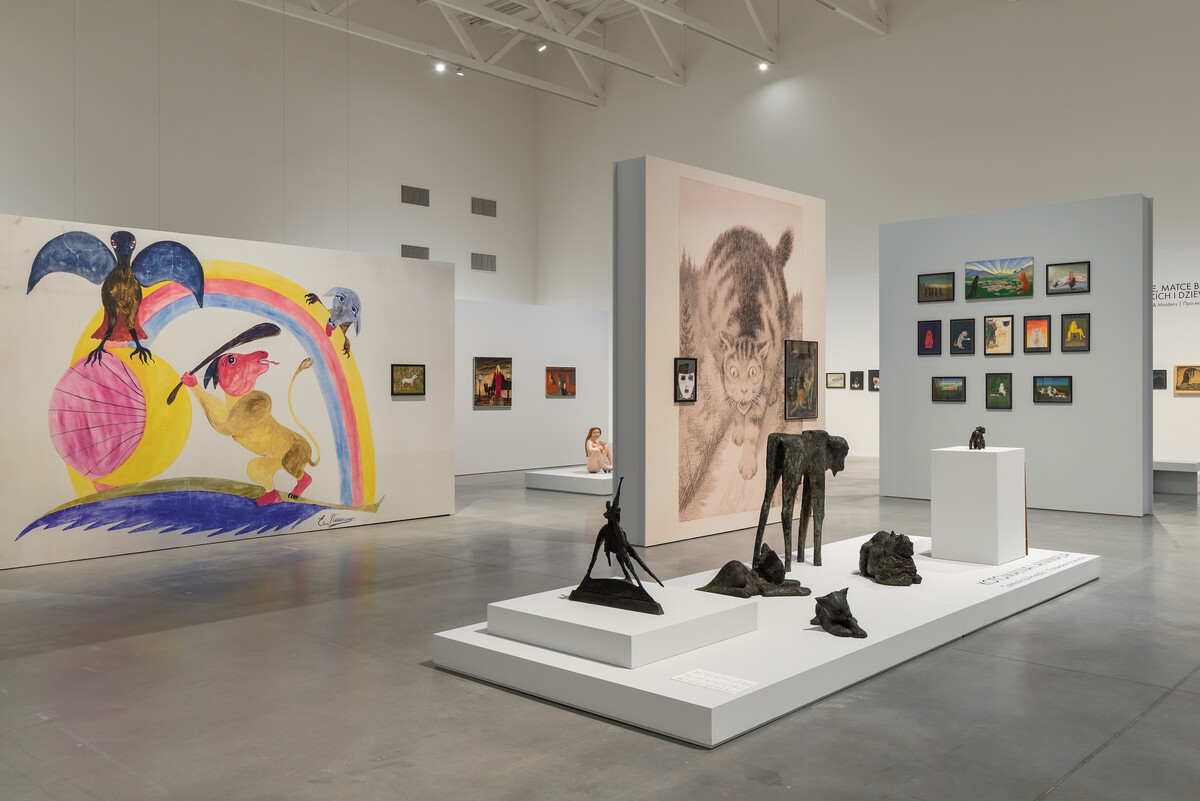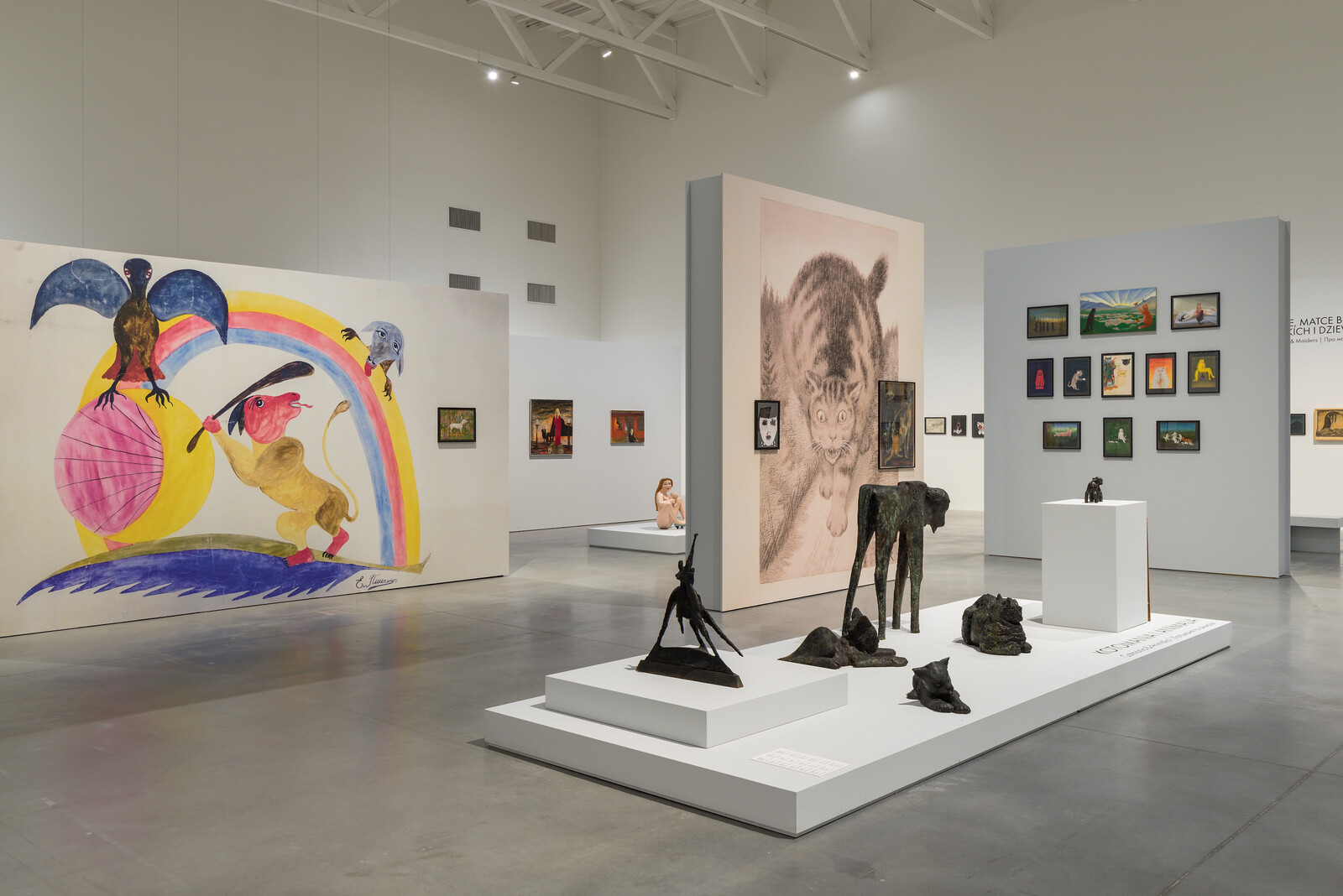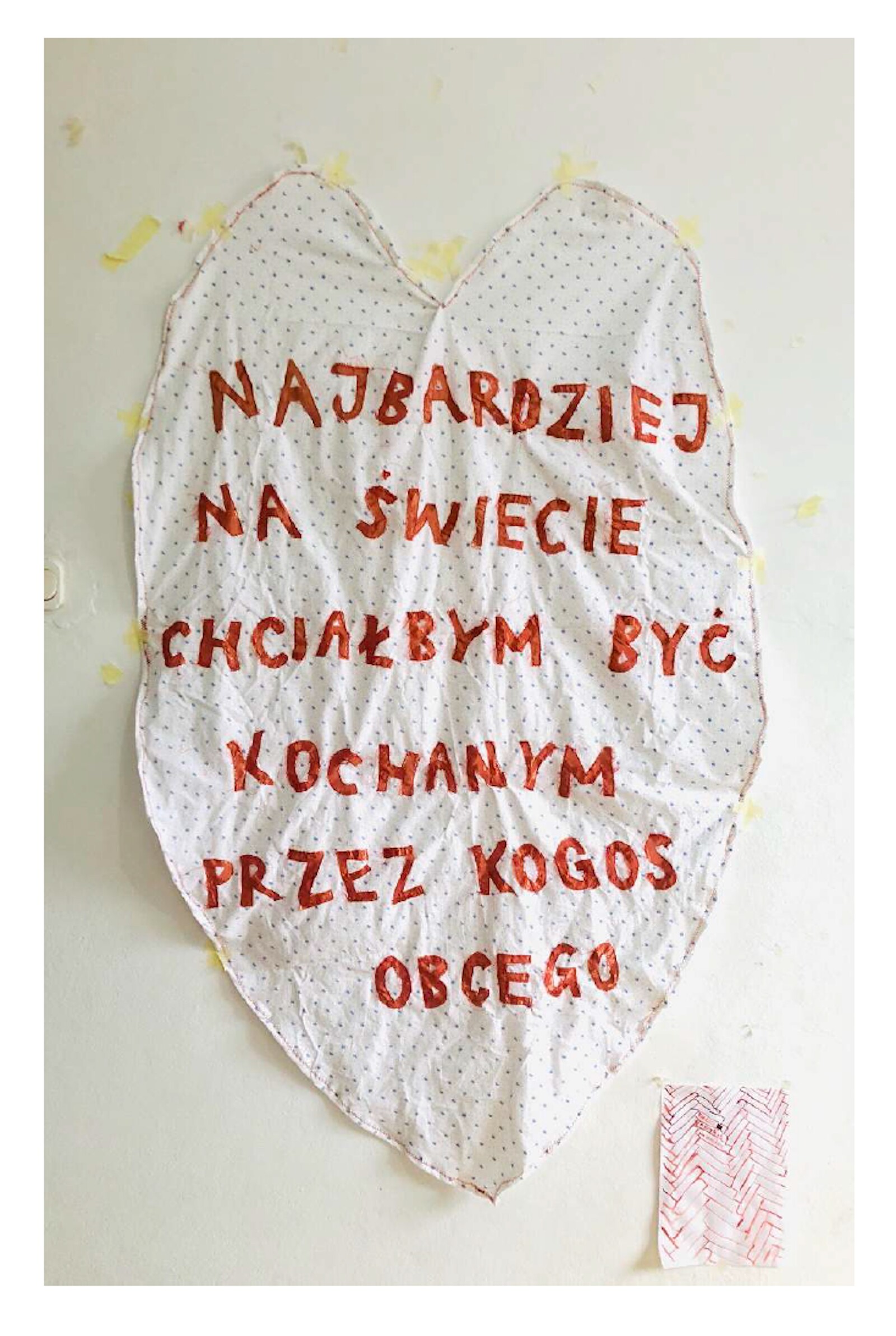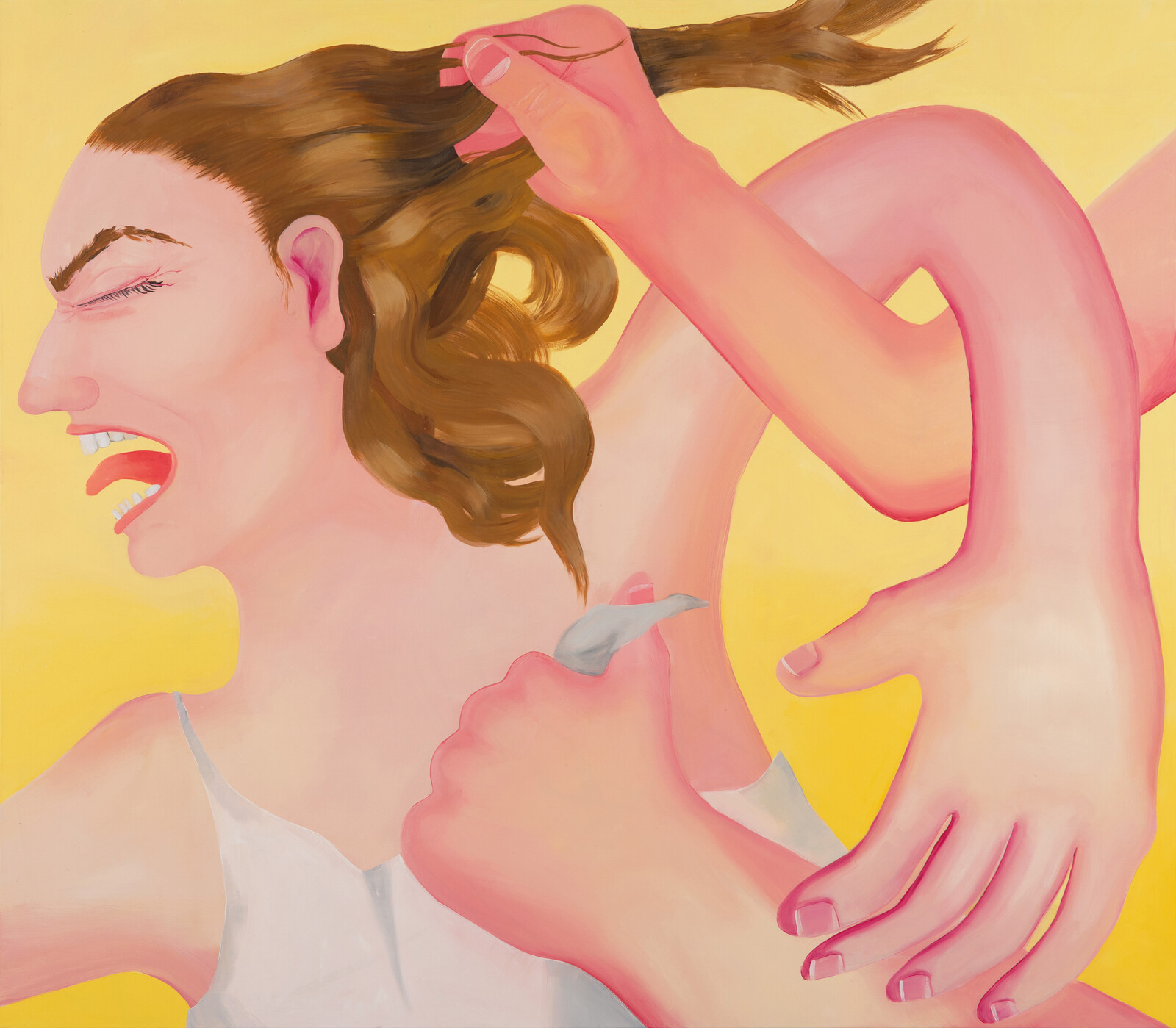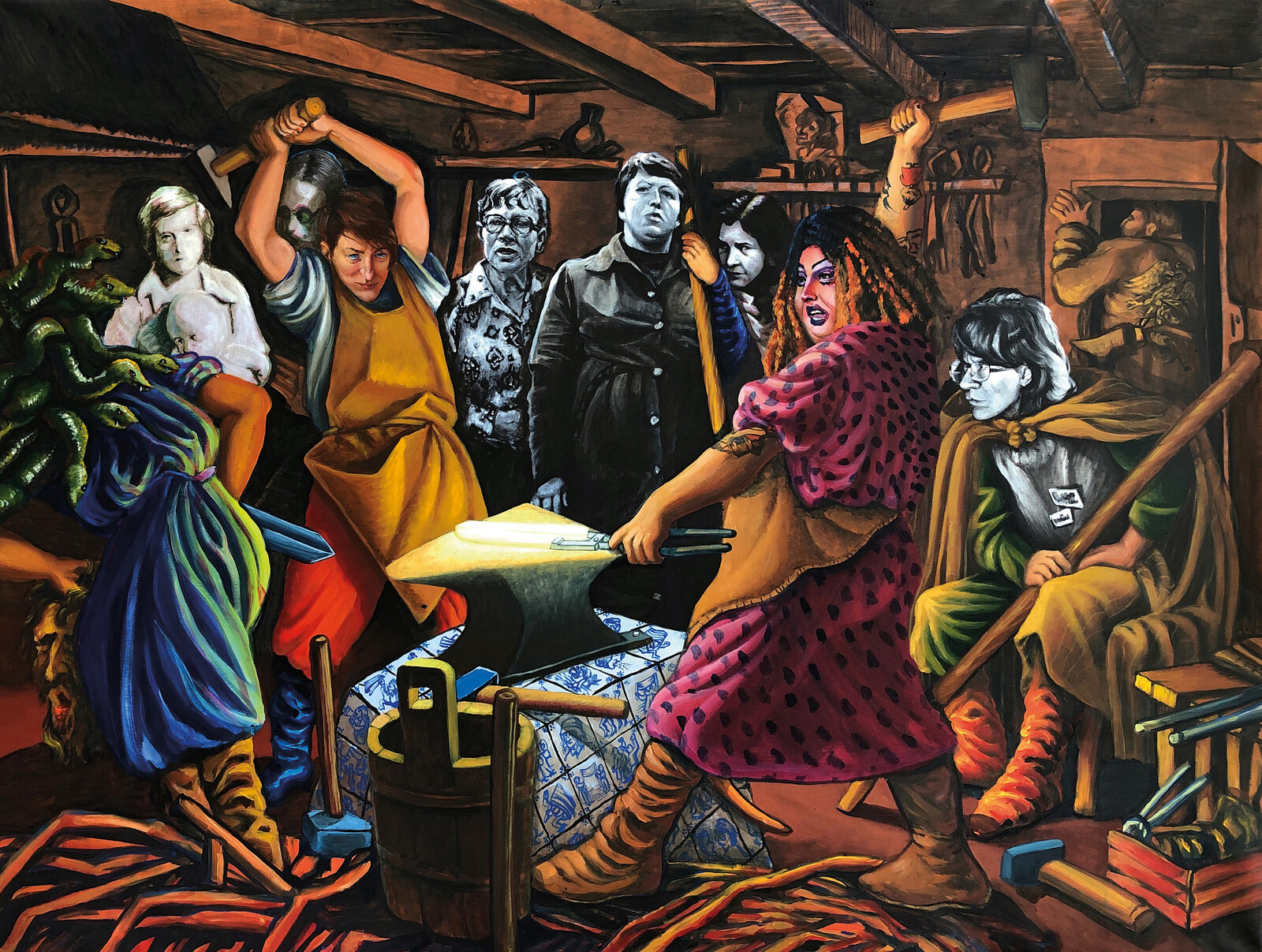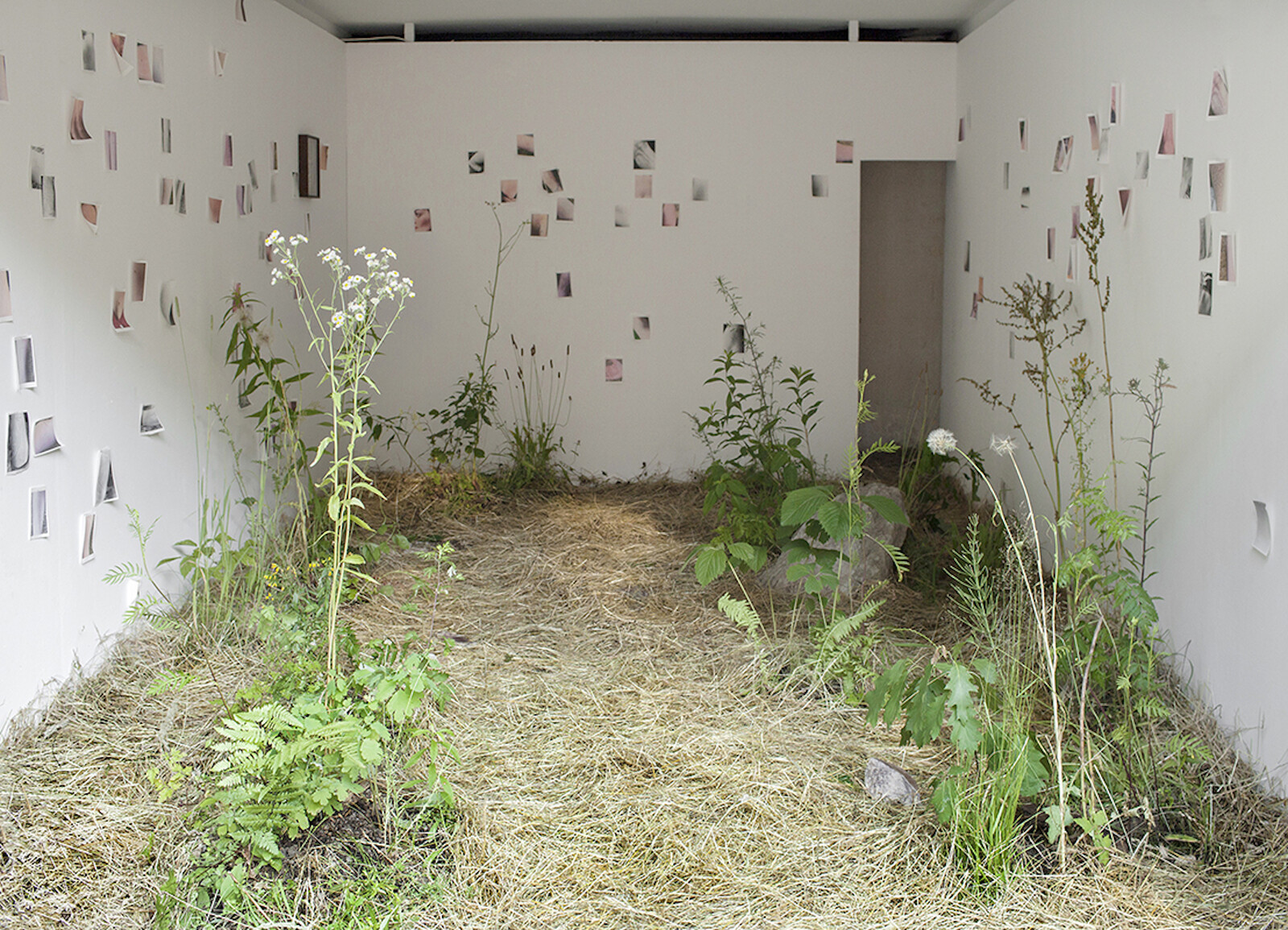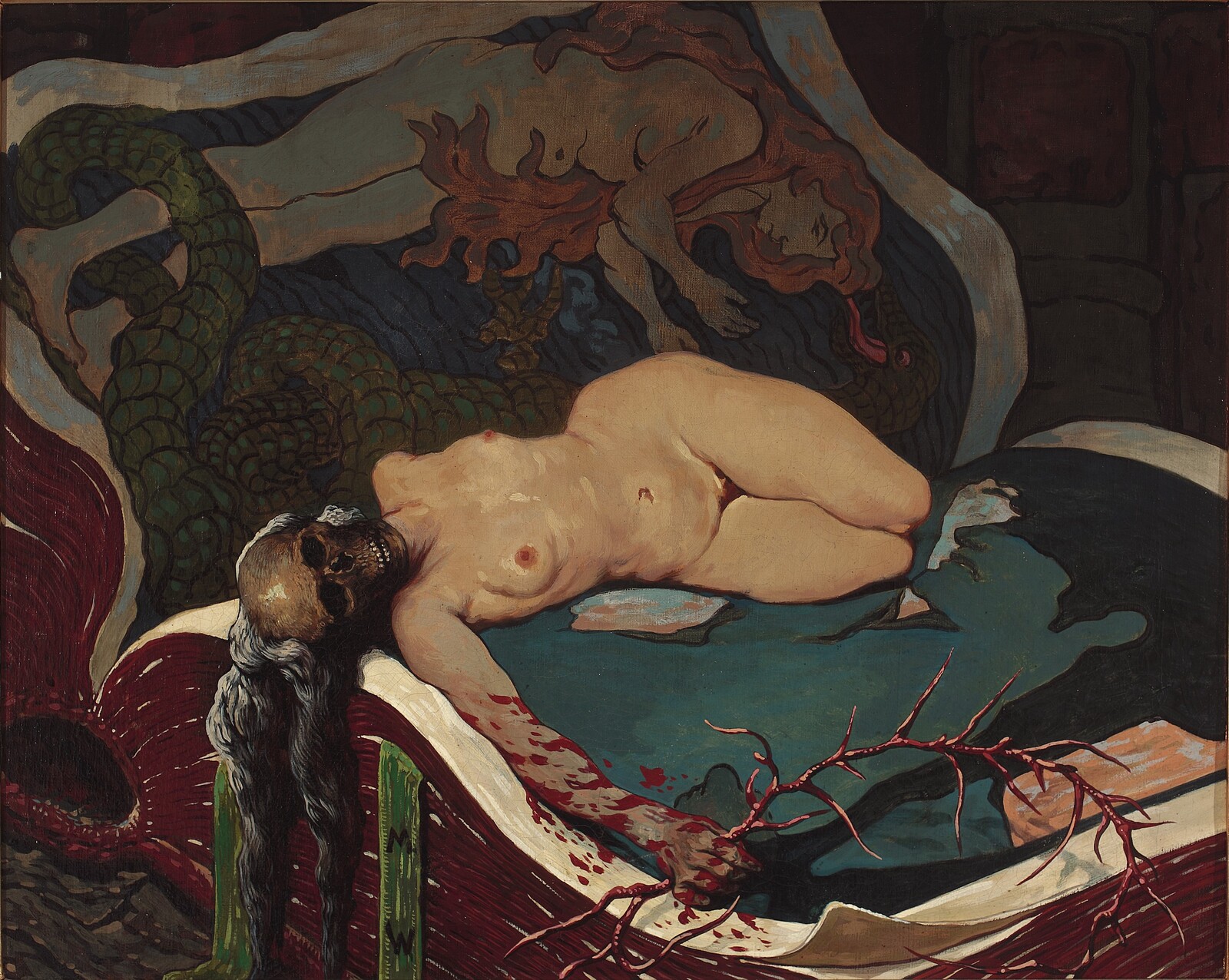Poland, as the theorist Maria Janion has noted, lies East of the West and West of the East.1 The cognitive dissonance can sometimes manifest in a complex blend of inferiority complex and messianic pride, often expressed via tales of the nation’s suffering and past glory. The majority of post-1989 efforts to tell the nation’s history have focused on repressing “Eastern” attributes in favor of “Western,” but Russia’s war on Ukraine has seen the nation assert its solidarity with its beleaguered eastern neighbor.
Warsaw’s Museum of Modern Art is trapped between the Stalinist Palace of Culture and Science and proliferating skyscrapers, and the institution’s programming reflects the difficulty of reconciling these two influences. Its temporary home, close to the Vistula River, currently hosts “The Dark Arts: Aleksandra Waliszewska and Symbolism from the East and North,” curated by Alison M. Gingeras and Natalia Sielewicz.2 The reclusive painter has gained an enormous online following for her somber, cryptic gouaches depicting a cast of mysterious figures including woman-spider hybrids, sinister Slavic wraths, lonely hangmen, flayed youngsters, and bleeding mystics.
The curators have applied a decorum-defying social media logic to the show’s methodology, juxtaposing works of varying provenances and gravities. Yet the physical center of the exhibition is devoted to images of the artist’s family: three generations of female artists (Kazimiera Dębska, Anna Dębska, and Joanna Waliszewska) and a beloved cat, Mitusia, who is a recurring heroine of Waliszewska’s drawings. Elsewhere, it explores Waliszewska’s source material and inspirations through a number of loans from museums in Kraków (Jan Rembowski’s pastel allegories), Kaunas (enchanted landscapes by Mikalojus Konstantinas Čiurlionis), Oslo (Theodor Kittelsen’s eerie watercolors), Riga (fairy-tale etchings by Rihards Zariņš), Tartu (battle scenes by Nikolai Triik), and Vilnius (Antanas Žmuidzinavičius’s depictions of grief). The effect is to establish not only a genealogy of Waliszewska’s work, but an alternative canon of symbolism.
Waliszewska’s surrealist take on Slavic iconography is part of a broader trend also observed in “The Discomfort of Evening”, curated by Magdalena Komornicka at Zachęta National Gallery of Art. In this survey of recent developments in Polish art, the surrealist tropes of dreamlike introspection and jarring juxtaposition are used to express individual and collective anxieties. The dense arrangement of the show—a wink to the sudden abundance of the 1990s, a result of the country’s transition to a capitalist economy—adds to the sensation of being overwhelmed. The exhibition showcases an emerging generation: highlights include the hilarious queering of national symbols by Kacper Szalecki, Karolina Wojtas’s dissection of the traditional family model, the underbelly of history as portrayed by Tomek Paszkowicz and Anna Grzymała, and affect as a double-edged sword in the work of Agata Słowak.
Across the country, grassroots alternatives to the official cultural infrastructures are springing up in garages, flats, or studios as artists look to organize shows at a pace that can respond to new developments in local and national politics. As the situation in public institutions continues to worsen—through the increasing interventions of a right-wing, ultra-Catholic, anti-abortion government—independent and artist-run spaces have become more numerous. Stroboskop, Inne Towarzystwo, Fundacja Dzielna, o/b/c/y and Galeria Czwartek are a few of the places that continue the tradition of “author’s galleries,” a phenomenon that commenced in the 1970s as a response to the communist government’s suppression of the arts.
Commercial galleries are also recognizing the potential of self-organization. In September, as well as the upcoming twelfth edition of Warsaw Gallery Weekend (29 September–2 October), the city hosted new initiatives from the women-led Hotel Warszawa Art Fair to “Druh druha,” a gallery-share allowing the Ukrainian and Polish art worlds to intersect and integrate. Warsaw is still trying to write its own history outside the closed circuit of the East/West binary. The work on view in the city gives hope for a new Polish identity, one that does not define itself in relation to outside forces but embraces collectivity and empathy instead.
Maria Janion, Niesamowita Słowiańszczyzna (Uncanny Slavdom) (Kraków: Wydawnictwo Literackie, 2007).
The Museum at the Vistula will serve as the main exhibition venue for the Museum of Modern Art until the completion of its permanent seat in the city center (scheduled for mid-2023).
